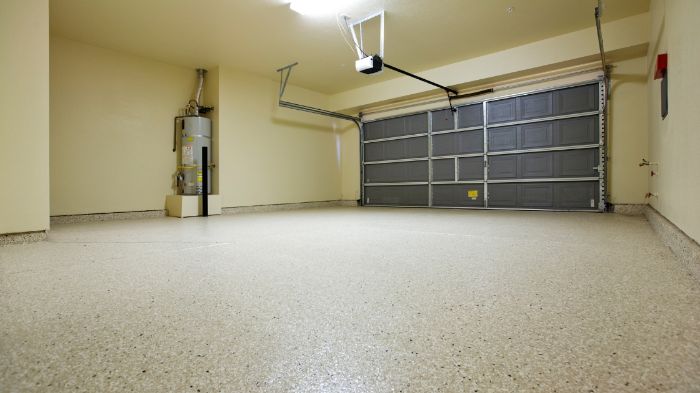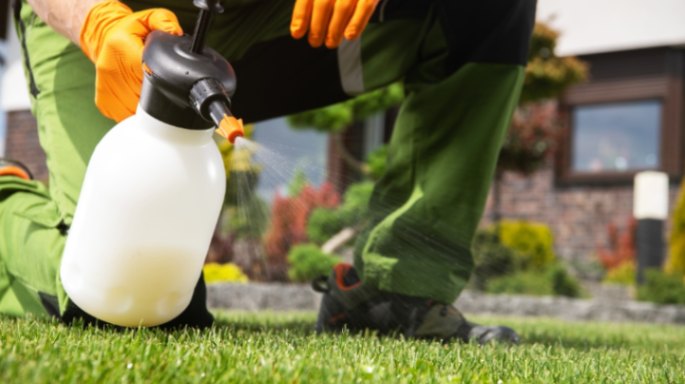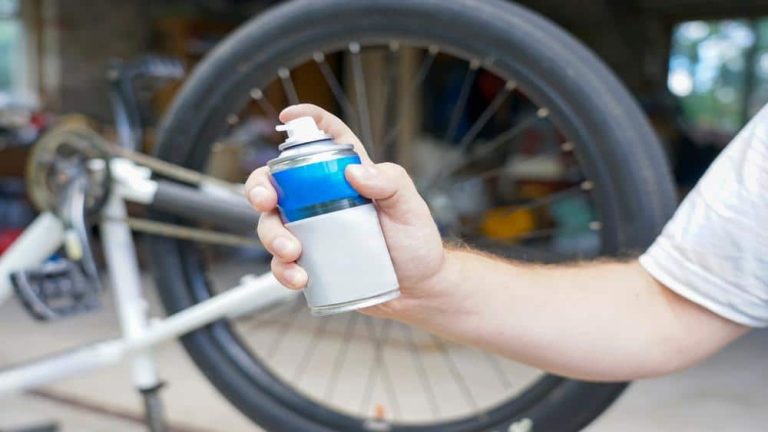This article will explore how to hook up outdoor sink using garden hose and the benefits of outdoor sinks, the advantages of using a garden hose to connect them, and the importance of proper installation and maintenance. By following these guidelines, you can enjoy the benefits of an outdoor sink without any issues or concerns.
Outdoor sinks can be a valuable addition to any backyard or outdoor space. They offer a convenient and hygienic way to wash hands, prepare food, and clean up after outdoor activities. One cost-effective solution for installing an outdoor sink is to connect it to a garden hose.
This method is simple and can be done without professional plumbing experience. However, following safety precautions and local plumbing codes is essential to ensure that the installation is safe and meets all requirements.
Method 1: Connecting the Sink to the Hose
Connecting a garden hose to a sink can be a convenient way to water your plants or wash your car without a hose spigot. However, the process can seem daunting if you’ve never done it before. In this guide, we’ll walk you through the steps of attaching a garden hose to a sink, including the materials you’ll need and tips for avoiding leaks.
Materials Needed:
Step-by-Step Guide:
- Turn off the water supply: Before you start, turn off the water supply to the sink you’ll be attaching the hose. Look for the shut-off valve under the sink and turn it clockwise to close it.
- Remove the aerator: The aerator is the small screen at the end of the faucet. Use your pliers to unscrew it from the faucet and remove it. Set it aside in a safe place to avoid losing it.
- Attach the rubber washer: Take one of the rubber washers and slide it onto the threaded end of the hose. The washer should fit snugly onto the threads.
- Connect the hose: Thread the hose onto the faucet where you removed the aerator. Use your pliers to tighten the hose onto the faucet, but be careful not to overtighten it.
- Attach the second washer: Slide the second rubber washer onto the other end of the hose.
- Connect the hose to the sink: Thread the other end onto the adapter that connects to the sink. Use your pliers to tighten the connection, again being careful not to overtighten it.
- Turn on the water supply: Once everything is connected, turn the water supply back on by turning the shut-off valve counterclockwise. Turn on the faucet to check for any leaks.
Tips for Avoiding Leaks:
- Ensure the rubber washers are in place on both ends of the hose. These washers create a tight seal that helps prevent leaks.
- Avoid overtightening the connections. This can damage the threads and cause leaks.
- Check the connections periodically for signs of wear or damage. If you notice any leaks, tighten the connections or replace the washers as needed.
By following these simple steps and tips, you can easily attach a garden hose to a sink and enjoy the convenience of having water where you need it. Just be sure to turn off the water supply and check for leaks before using the hose to avoid any surprises.
Method 2: Connecting the Hose to the Water Source
Connecting a garden hose to a water source is a straightforward process that can provide a convenient way to water your plants or clean outdoor spaces. This guide will explain the materials you’ll need, the steps to follow, and tips for ensuring proper water flow and avoiding leaks.
Materials Needed:
- Garden hose
- Spigot
- Hose bib
- Adjustable pliers
- Teflon tape (optional)
Step-by-Step Guide:
Locate the fixture: Look for the spigot on the exterior of your home or in the yard. This is where you’ll attach the garden hose.
1: Prepare the hose:
- Check the end of your garden hose for damage or cracks.
- If it’s in good condition, insert the end of the hose onto the fixture.
- Twist the hose clockwise until it’s snugly in place.
2: Attach the hose bib: The hose bib is the attachment that connects the garden hose to the fixture. Screw the hose bib onto the spigot and use pliers to tighten it securely. If you’re concerned about leaks, wrap Teflon tape around the spigot threads before attaching the hose bib.
3: Connect the garden hose
Slide the other end of the garden hose onto the hose bib. Twist the hose clockwise until it’s tightly secured in place.
Test the water flow:
- Turn on the water supply and check the water flow from the hose.
- If the flow is weak, check the connections for leaks and make sure they’re tightly secured.
- If there’s still an issue, check the hose for kinks or blockages.
Tips for Preventing Leaks and Ensuring Proper Water Flow
- Check the garden hose for damage before use. If there are any cracks or splits in the hose, it may not provide adequate water flow.
- Tighten all connections securely to prevent leaks. Use pliers if necessary, but be careful not to overtighten and damage the threads.
- Use Teflon tape to wrap the spigot threads before attaching the hose bib to prevent leaks.
- Check the hose for kinks or blockages that could impede water flow. Straighten out any curls or use a hose nozzle to help clear blockages.
- Disconnect the garden hose from the spigot during winter to prevent freezing and damage.
By following these simple steps and tips, you can easily connect a garden hose to a water source and enjoy the convenience of having water where you need it. Check for leaks and proper water flow to ensure your garden or outdoor spaces are well-watered and healthy.

Method 3: Installing a Hose Reel
Using a hose reel to connect an outdoor sink can provide a convenient and organized way to store and access your garden hose. In this guide, we’ll explain the benefits of using a hose reel, the materials you’ll need, the steps to follow, and tips for selecting the right location and ensuring proper water flow.
Benefits of Using a Hose Reel
- Organization: A hose reel allows you to store your garden hose neatly and easily access it when needed.
- Convenience: With a hose reel, you don’t have to worry about dragging a heavy, tangled hose across your yard.
- Durability: Hose reels protect your garden hose from damage caused by exposure to sun and weather.
Materials Needed:
- Hose reel
- Mounting hardware (screws and anchors)
- Power Drill
- Level
- Pencil
Step-by-Step Guide:
Choose a location: Select a place for your hose reel that is close to your outdoor sink and has easy access to your water source. Use a level and pencil to mark where you want to install the hose reel.
Install the mounting hardware: Use a drill and the provided mounting hardware (screws and anchors) to attach the hose reel to the wall. Make sure the hose reel is level and securely attached to the wall.
Connect the garden hose: Once the hose reel is securely mounted, connect one end of your garden hose to the water source and the other end to the hose reel. Twist the hose clockwise until it’s snugly in place.
Test the water flow:
- Turn on the water supply and check the water flow from the hose.
- If the flow is weak, check the connections for leaks and make sure they’re tightly secured.
- If there’s still an issue, check the hose for kinks or blockages.
Tips for Selecting the Right Location and Ensuring Proper Water Flow
- Choose a location for your hose reel that is close to your outdoor sink and has easy access to your water source.
- Ensure that your mounting hardware is appropriate for the surface mounting of the hose reel.
- Before drilling holes to mount the hose reel, check for potential obstructions, such as electrical wiring or plumbing.
- Make sure the hose reel is level to ensure proper water flow.
- Keep the hose reel out of direct sunlight to extend its lifespan.
- If you live in a climate with freezing temperatures, disconnect the garden hose from the hose reel and store it indoors during winter.
By following these simple steps and tips, you can easily install a hose reel and enjoy its convenience and organization for your outdoor sink and garden hose. Remember to select the right location and ensure proper water flow to ensure your garden or outdoor spaces are well-watered and healthy.
Method 4: Installing a Water Supply Line
Installing a dedicated water supply line for your outdoor sink can provide many benefits, including improved water pressure, increased convenience, and better hygiene. In this guide, we’ll explain the benefits of installing a water supply line, the necessary materials, the steps to follow, and tips for avoiding leaks and ensuring proper water flow.
Benefits of Installing a Water Supply Line
- Improved Water Pressure: With a dedicated water supply line, you’ll have better water pressure, which can be especially important if you use your outdoor sink for tasks such as washing dishes or cleaning garden tools.
- Increased Convenience: A dedicated water supply line eliminates running a hose from your house or another water source to your outdoor sink.
- Better Hygiene: A dedicated water supply line allows you to use hot water for cleaning, which can help kill germs and bacteria.
Materials Needed:
Step-by-Step Guide:
- Turn off the water supply: Before installing a water supply line, turn off the main water supply to your house to avoid accidental water leaks.
- Select a location: Choose a place for the water supply line that is close to your outdoor sink and has easy access to your main water supply.
- Install the shut-off valve: Use a pipe cutter to cut the main water supply pipe and install a shut-off valve. Use PVC cement to secure the valve to the pipe and allow it to dry according to the manufacturer’s instructions.
- Measure and cut the PVC pipe: Measure the distance from the shut-off valve to the location of your outdoor sink and cut a piece of PVC pipe to the appropriate length.
- Install the PVC pipe: Use PVC cement to attach the PVC pipe to the shut-off valve and the water supply connection on your outdoor sink. Allow it to dry according to the manufacturer’s instructions.
- Apply thread sealant tape: Apply thread sealant tape to the threads on the connections between the shut-off valve and the PVC pipe, as well as between the PVC pipe and the water supply connection on your outdoor sink.
- Turn on the water supply: Turn on the main water supply to your house and test the water flow from your outdoor sink. Check for leaks and make sure the connections are tight.
Tips for Avoiding Leaks and Ensuring Proper Water Flow
- Use PVC cement and allow it to dry correctly to ensure a secure connection.
- Apply thread sealant tape to the threads on all links to avoid leaks.
- Use a wrench to tighten connections, but be careful not to overtighten them.
- Test the water flow before finishing the installation to ensure proper water pressure and flow.
- If you’re uncomfortable installing a water supply line, consider hiring a professional plumber.
By following these steps and tips, you can easily install a dedicated water supply line for your outdoor sink and enjoy the benefits of improved water pressure, increased convenience, and better hygiene. Remember to take your time and ensure all connections are secure and tight to avoid leaks.
FAQ
How do I choose the right garden hose for my outdoor sink?
Consider factors such as length, diameter, and material when choosing a garden hose for your outdoor sink. Look for long enough hoses to reach your sink and have a diameter that allows for sufficient water flow. Additionally, consider the material of the hose, as some materials may be more durable or resistant to kinking.
What type of washers should I use to prevent leaks?
To prevent leaks, it is recommended to use rubber washers with a good seal. These washers are commonly found at hardware stores and are designed to fit onto the end of the hose, creating a tight seal between the hose and the water source.
Can I use a pressure washer to clean my outdoor sink?
While pressure washers are effective for cleaning outdoor surfaces, they may not be suitable for cleaning your outdoor sink. High-pressure water can damage the sink or cause leaks if not used carefully. Instead, consider using a soft-bristled brush and mild detergent to clean your sink.
What are some common mistakes to avoid when installing an outdoor sink?
Common mistakes to avoid when installing an outdoor sink include not adequately securing the sink to the mounting surface, using incorrect or insufficient materials, and not correctly connecting the sink to the water source. It is essential to carefully follow installation instructions and take the time to ensure that all connections are tight and secure.
Do I need a permit to install an outdoor sink?
The requirements for permits vary depending on location and the specifics of the installation. In some areas, a permit may be required to install an outdoor sink. It is recommended to check with your local government or building department for specific requirements.
How do I winterize my outdoor sink to prevent freeze damage?
- Turn off the water supply and disconnect the hose to winterize your outdoor sink.
- Drain any remaining water from the sink and pipes to prevent freezing and potential damage.
- Cover the sink and lines with an insulating material, such as foam insulation or towels, to protect against freezing temperatures.
Can I use hot water in my outdoor sink?
The use of hot water in an outdoor sink depends on the specific sink and its components. Some outdoor sinks are designed to handle hot water, while others may not withstand the heat. It is essential to consult the manufacturer’s instructions and guidelines before using hot water in your outdoor sink.
How do I clean my outdoor sink to prevent clogs and buildup?
Regularly clean your outdoor sink with a mild detergent and soft-bristled brush to prevent clogs and buildup. Avoid harsh chemicals or abrasive scrubbers that can damage the sink or cause scratches. Additionally, avoid pouring grease or oil down the sink to prevent clogs.
What should I do if I detect a leak in my outdoor sink?
Turn off the water supply to prevent further damage if you detect a leak in your outdoor sink. Inspect the sink and all connections for any signs of wear or looseness. Tighten any loose connections and replace damaged components, such as washers or pipes.
Can I install an outdoor sink if I have a well for my water supply?
Yes, you can install an outdoor sink with a well for the water supply. However, ensuring that the sink and its components are compatible with the excellent system and that all necessary safety measures are taken is essential. It is recommended to consult a professional plumber or well specialist for guidance on installation and compatibility.
Conclusion
In conclusion, this article has provided a comprehensive guide for installing an outdoor sink using a garden hose. We have covered various methods, including connecting the sink to the hose, connecting the hose to the water source, installing a hose reel, and installing a water supply line. We have also included FAQs to help readers troubleshoot common issues and avoid mistakes during installation.
We encourage readers to follow the step-by-step guides provided in each section to ensure a safe and secure installation. It is crucial to use the appropriate materials and tools, follow safety guidelines, and comply with local plumbing codes when installing any plumbing fixture.
By following these guidelines, homeowners can enjoy the convenience and functionality of an outdoor sink for gardening, cleaning, and other outdoor activities.





